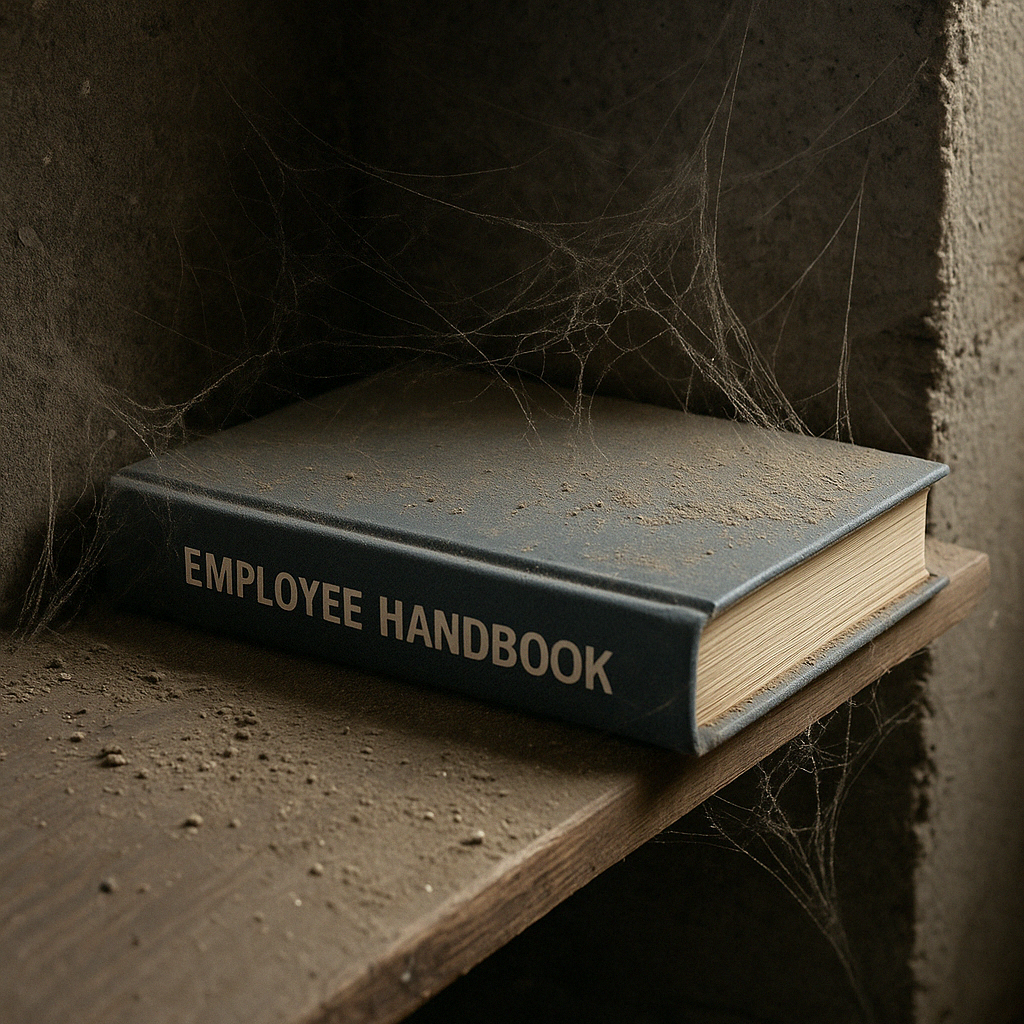What do you think of when you hear the words “workplace culture”? Is it drinks on a Friday? Morning huddles? Team celebrations?
What actually shapes your workplace culture isn’t the perks – it’s the everyday expectations, behaviours and decisions that people live by – the unwritten rules of your workplace that make it either a toxic, tiring place or a vibrant, friendly and forward-moving powerhouse.
We might be slightly biased, but we think one of the most powerful tools to shape your workplace culture can be your Employee Handbook, so long as it is a living guide that influences how people treat each other, how they handle challenges and how your business runs on a daily basis.
Lets take a dive into how your Employee Handbook helps create and nurture the culture you want.
It Sets Clear Expectations
Culture starts with clarity. Employees can’t align with your company’s values if they don’t know what’s expected. A well-written handbook outlines the standards for:
Behaviour (like in your Appropriate Workplace Conduct Policy)
Communication
Performance
Problem-solving
When everyone knows what’s expected — whether it’s respect, confidentiality, or safe work practices – the natural extension of that is an environment where people feel secure and valued.

It (Should) Reflect Your Company Values.

Your handbook is a chance to put your values into action, not just words on a poster. For example, if inclusivity is a core value, your handbook should include a strong Equal Opportunity and Discrimination policy. If safety is a top priority, a detailed Workplace Health & Safety and Drugs & Alcohol policy reinforces that message. If respect and fairness are important, a clear Complaint Resolution process shows employees you take their concerns seriously.
Every policy sends a message about what matters most to your business — and employees will notice.
It Supports Fairness and Consistency
Especially if it’s referred to often, and used to arbitrate decisions, your Employee Handbook provides a consistent framework.
If an issue arises, managers and employees have a clear, pre-agreed process to follow. This consistency builds trust, because people know they’ll be treated fairly and in line with documented procedures.
In turn, trust strengthens team morale and employee loyalty. Of course, this trust can only come into play if you actually do use your Employee Handbook when making hard decisions. It’s good practice to get used to opening it regularly, reviewing a policy with your team or just reviewing one yourself.
It Empowers Employees

When people are able to make decisions in their job confidently, they feel happier navigating their work life.
For example, a well-crafted Customer Service policy clearly explains what employees can do when dealing with customers — including whether they’re allowed to offer refunds or discounts, and up to what value.
And when complaints come in, your Customer Feedback and Complaints policy means employees know what steps a customer can take, what remedies they’re allowed to offer, and whether they’re entitled to walk away.
Your Employee Handbook can be a powerful tool to help your employees understand their place in your organisation, and that, in turn, can improve employee engagement.
Final Thought
Your Employee Handbook isn’t just a compliance tool — it’s one of the most powerful culture-building assets you have.
By clearly setting expectations, reflecting your values, supporting fairness, empowering employees, and of course, staying current, your handbook becomes a trusted foundation for a positive, thriving workplace culture.
Take the time to craft it carefully, review it regularly, and use it actively. Your workplace will be better for it — and your employees will thank you.










